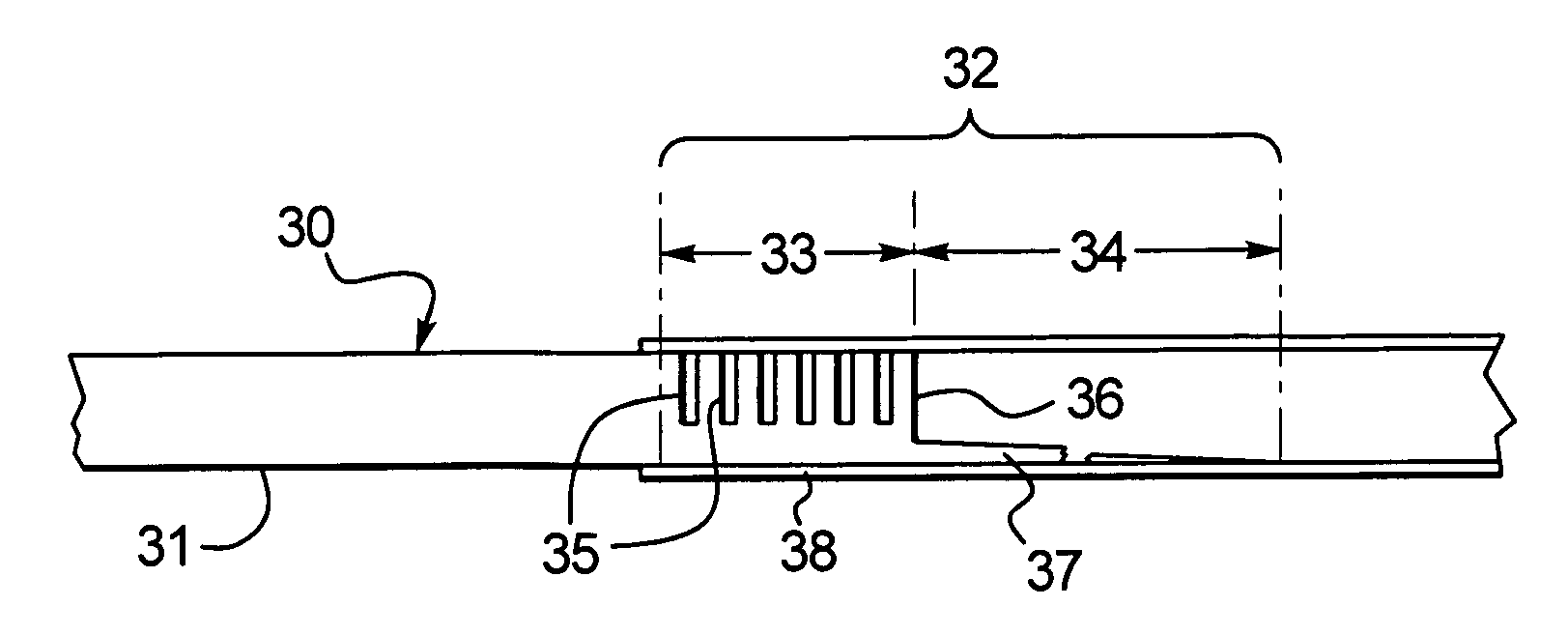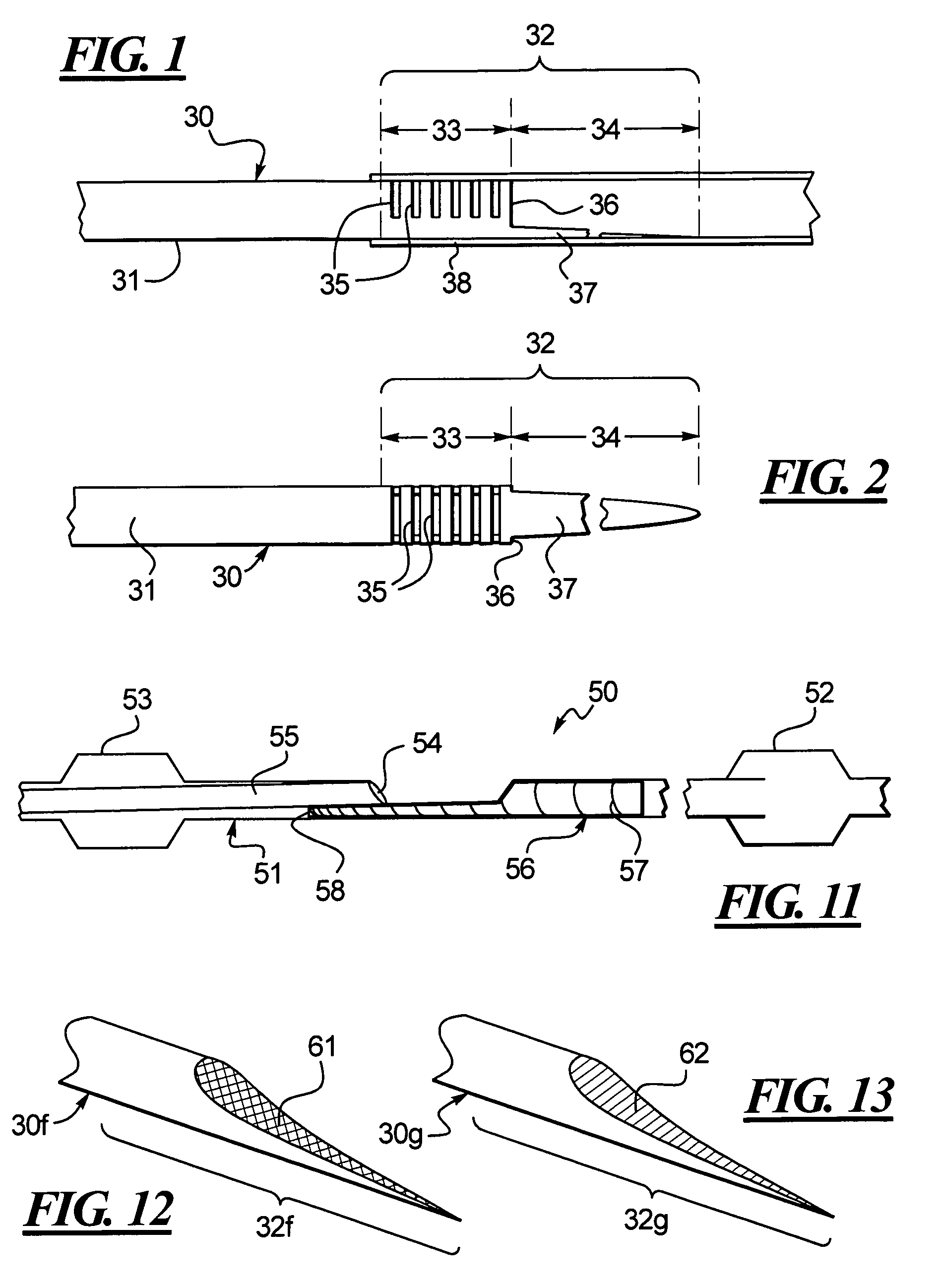Hypotube with improved strain relief
a technology of hypotube and strain relief, which is applied in the field of improved hypotube, can solve the problems of time-consuming and difficult task of advancing the catheter assembly to position the balloon across the stenosis, and achieve the effect of increasing the flexibility of the first section and enhancing the transition
- Summary
- Abstract
- Description
- Claims
- Application Information
AI Technical Summary
Benefits of technology
Problems solved by technology
Method used
Image
Examples
Embodiment Construction
[0040]One embodiment of an improved hypotube 30 is disclosed in FIG. 1 whereby the hypotube 30 includes a tubular shaft having a main section 31 connected to a distal section 32. The distal section 32 can be divided into a first section 33 and a second section 34. The first section 33 is integrally connected to the main section 31 and, to increase the flexibility of the first section 33, one or more of slits or cuts is provided in the first section 33. To further improve the function of the distal section 32 as a transition element, the second section 34 includes a cut-out portion 36 whereby the tubular wall is cut away leaving a stinger that is partially shown at 37 in FIGS. 1 and 2. The stinger can also be tapered. The distal section 32 of the hypotube 30 is received in a catheter 38. Thus, the distal section 32 includes at least two distinct sections 33, 34, both with different flexibilities. The first section 33, by way of the slits or cuts 35 is more flexible than the main sect...
PUM
| Property | Measurement | Unit |
|---|---|---|
| Length | aaaaa | aaaaa |
| Flexibility | aaaaa | aaaaa |
Abstract
Description
Claims
Application Information
 Login to View More
Login to View More - R&D
- Intellectual Property
- Life Sciences
- Materials
- Tech Scout
- Unparalleled Data Quality
- Higher Quality Content
- 60% Fewer Hallucinations
Browse by: Latest US Patents, China's latest patents, Technical Efficacy Thesaurus, Application Domain, Technology Topic, Popular Technical Reports.
© 2025 PatSnap. All rights reserved.Legal|Privacy policy|Modern Slavery Act Transparency Statement|Sitemap|About US| Contact US: help@patsnap.com



